MINOAS
- Home
- MINOAS
MINOAS - DAY 2
MINOAS Workshop – Day 2 at ICS-FORTH
The second day of the MINOAS Workshop (Machine Intelligence for iNverse imaging, Observation Analysis and Sensing) at ICS-FORTH further highlighted the breadth and depth of research at the intersection of machine learning, inverse problems, and imaging sciences.

|
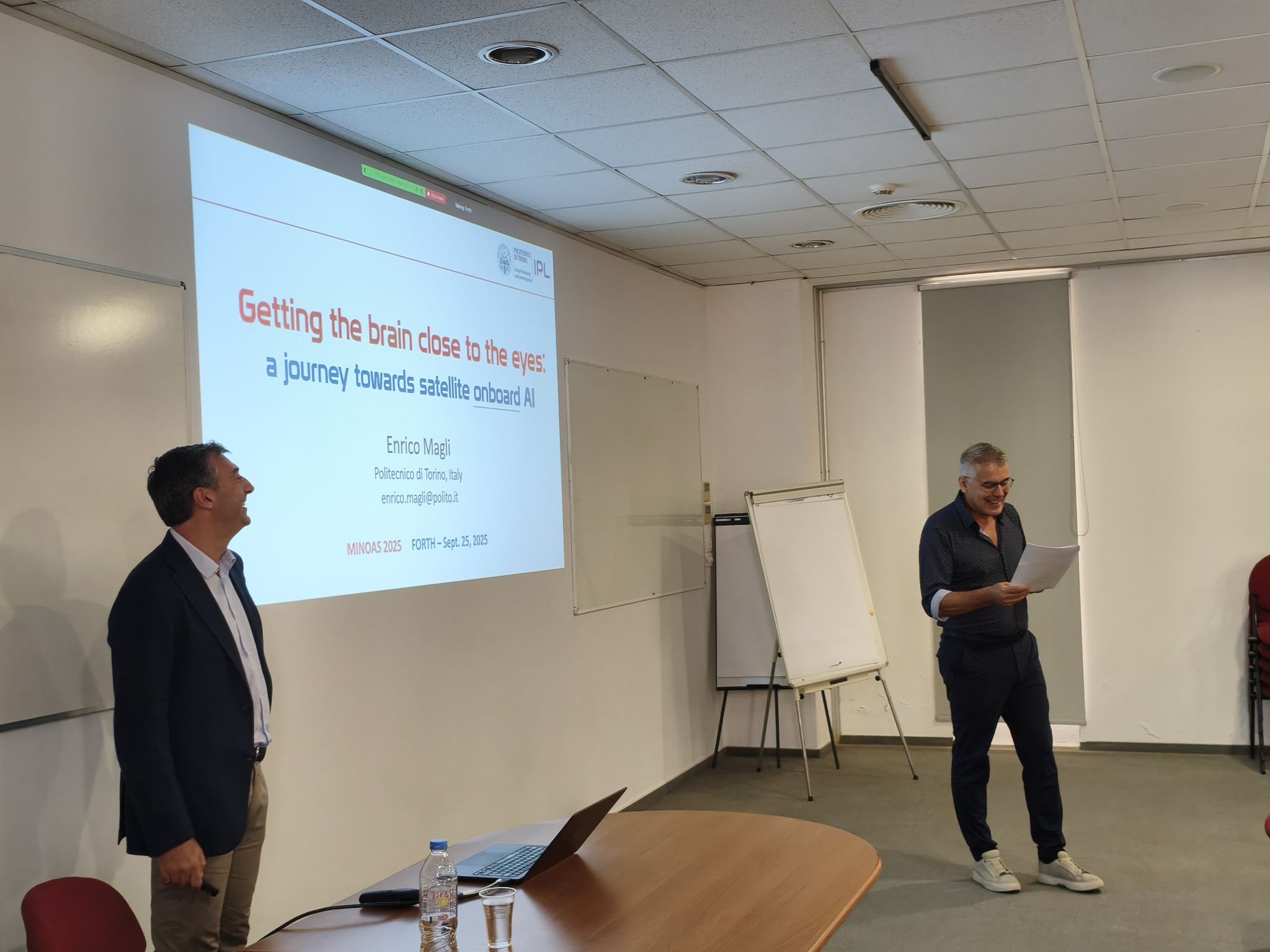
|
The morning session opened with two keynote lectures. Jason McEwen presented “High-dimensional uncertainty quantification with deep data-driven priors”, offering innovative perspectives on addressing uncertainty in complex inverse problems. Enrico Magli followed with “Getting the brain close to the eyes: a journey towards satellite onboard AI”, exploring the opportunities and challenges of integrating artificial intelligence directly on satellites to enable real-time data analysis in space.
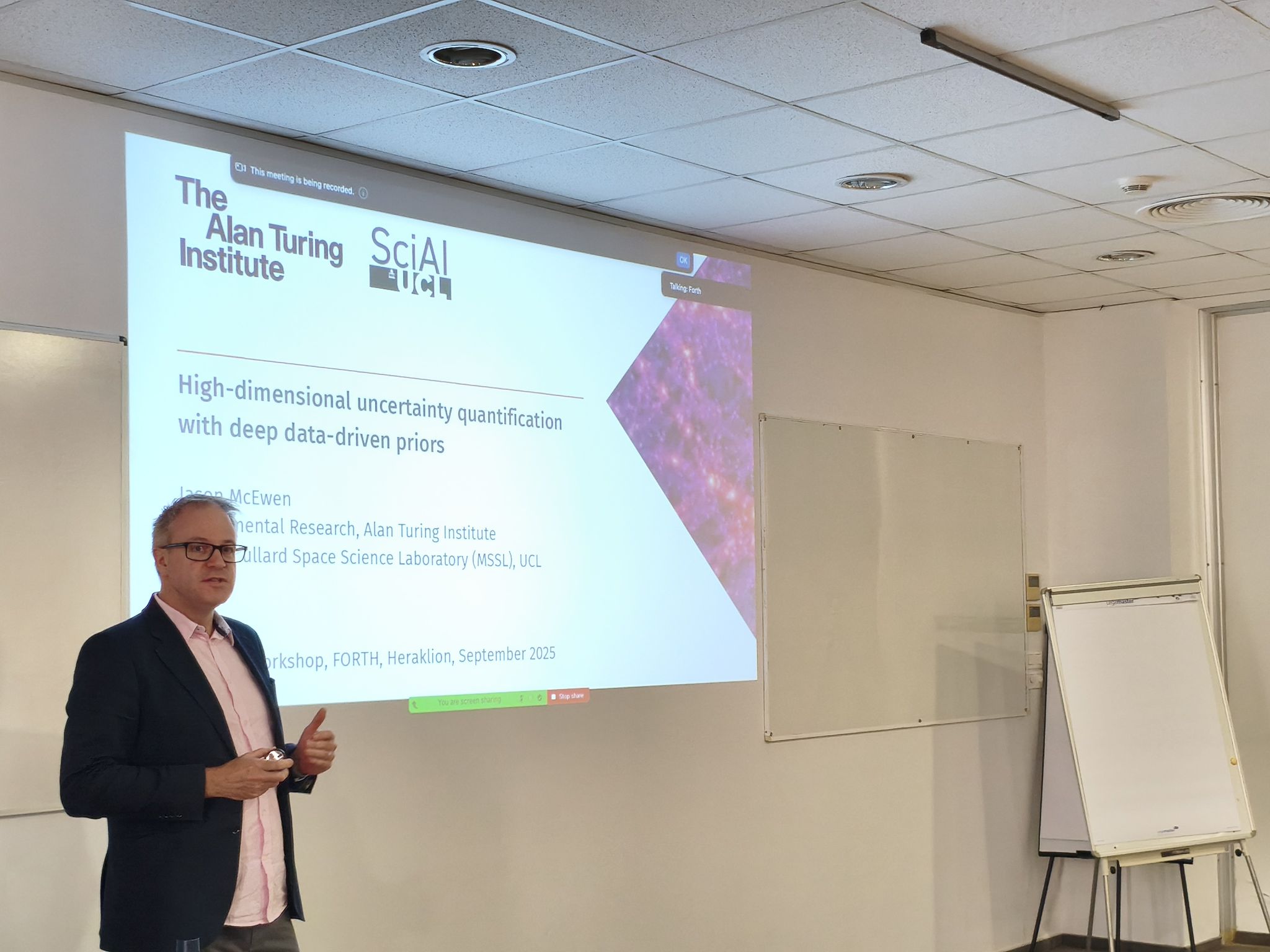
|
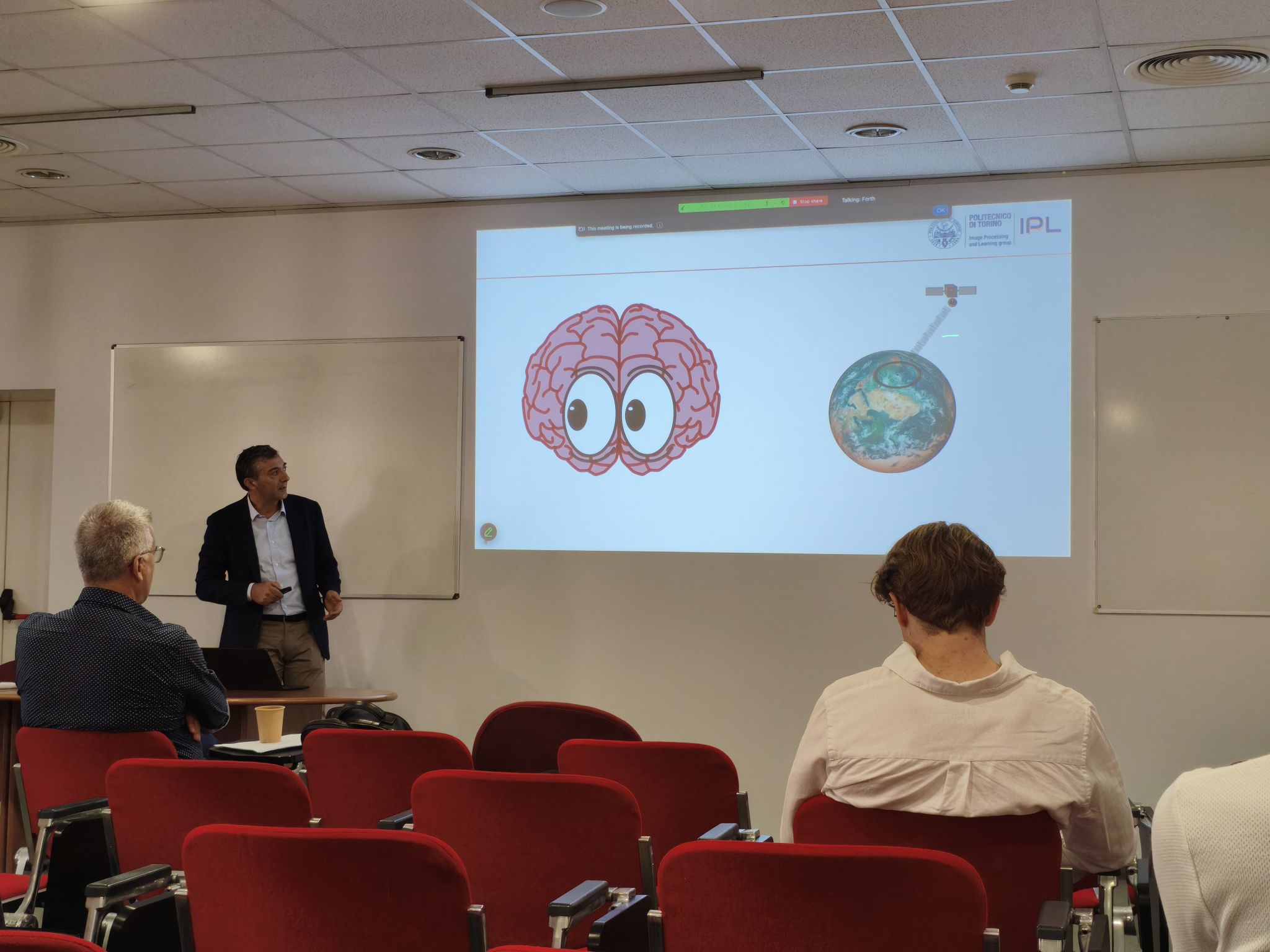
|
In the afternoon, the program shifted to a combination of senior contributions and presentations by emerging researchers. Yannis Pantazis delivered a keynote on “Deep Generative Models: Some Theory and Some Applications”, outlining both theoretical advances and practical use cases. Emmanuel Gangler (CNRS) then addressed “Signatures to Help Interpretability of Anomalies”, tackling the pressing issue of interpretability in machine learning-driven anomaly detection.
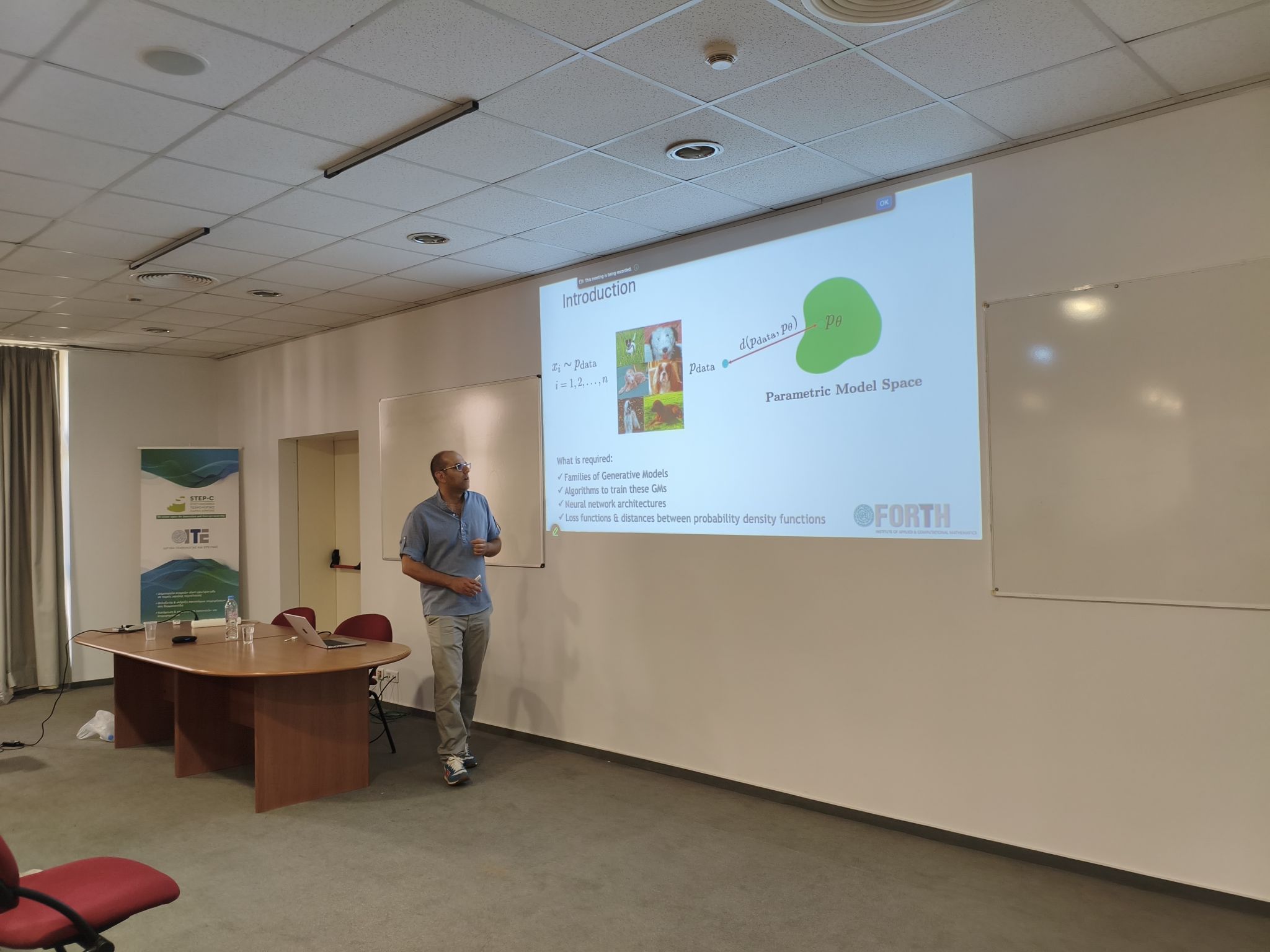
|
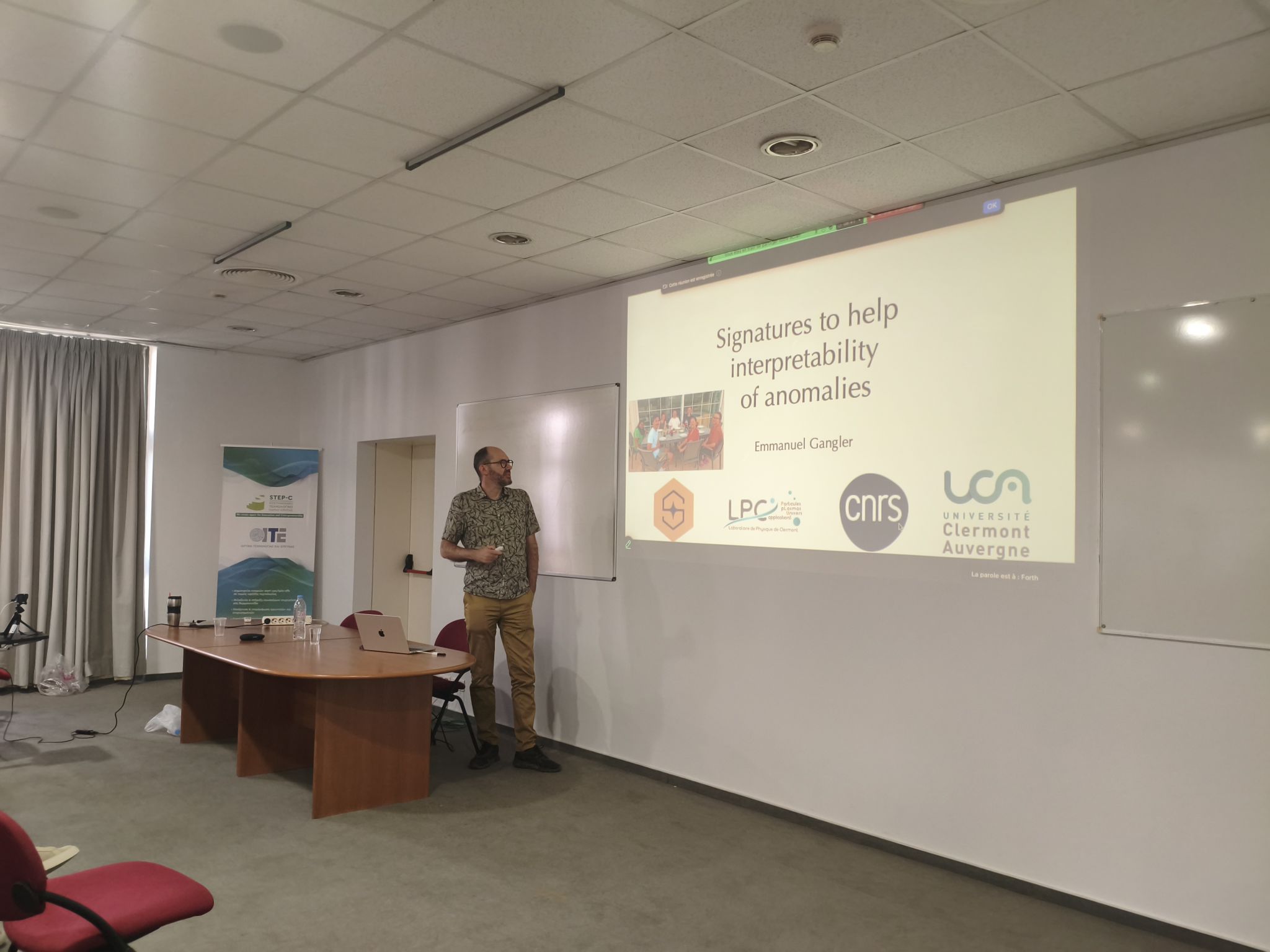
|
The day continued with a special session dedicated to younger researchers, who presented their latest contributions and stimulated vibrant discussion. Henry Aldridge introduced “Nested Sampling for High Dimensional Model Comparison with Inverse Imaging Applications”, Victor Bonjean discussed “Blind Source Separation with Learnlets”, and Michaela Areti Zervou gave an introduction to “Multimodal Learning: From Humans to AI and Imaging”.

|
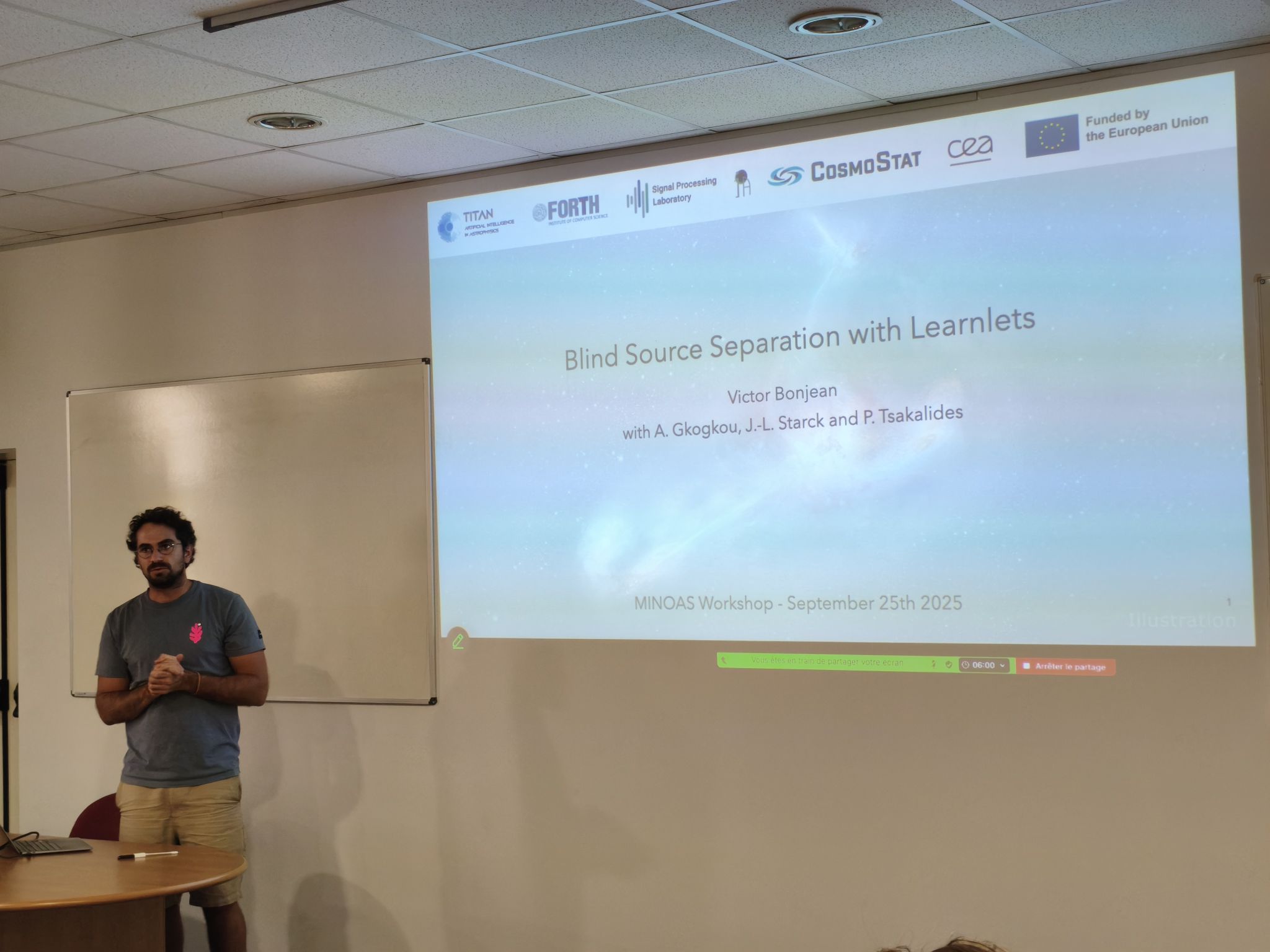
|

|

|
As Day 2 concluded, participants enjoyed an opportunity to relax and experience the cultural traditions of Crete, before returning for the third and final day of the MINOAS Workshop, which promised even more engaging sessions and discussions.
